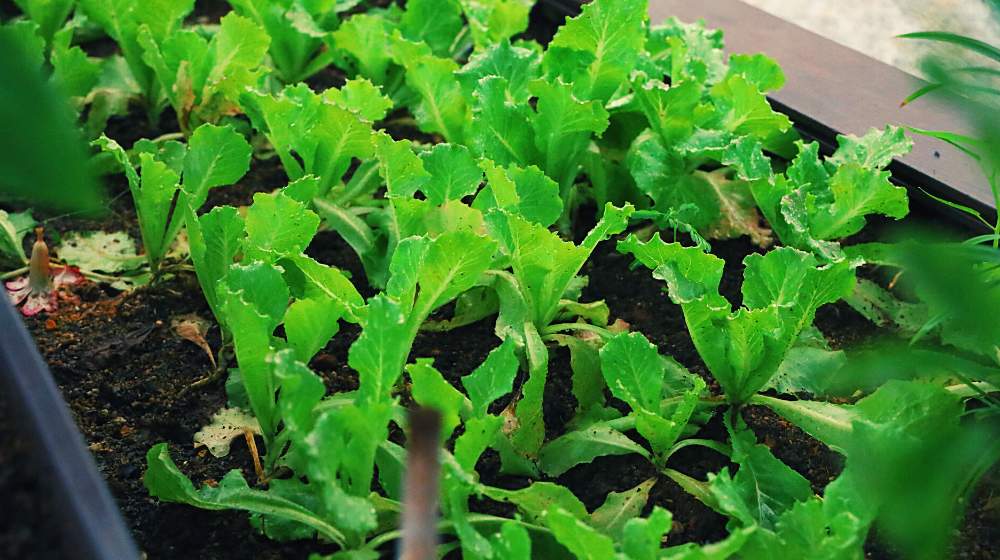Who doesn't want to know how to grow romaine lettuce fast the right way? Aside from being nutritious, romaine lettuce can be expensive at some local markets and grocery stores.
If you want to pick luscious lettuce leaves straight from your vegetable garden, this step-by-step guide will help you out!
RELATED: 7 Must-Know Tips When Growing Lettuce In Summer
How to Grow Romaine Lettuce for a Fresh Supply Everyday
Things You'll Need:
- Romaine Lettuce seeds
- Starting tray/container
- Potting mix
- Garden soil
- Fertilizer (organic/liquid)
Step 1: Prepare the Soil Mixture
Before planting your lettuce seeds, make sure the soil is well prepared. Lettuce loves a loose and well-draining soil that is rich in nutrients. And just like other greens, Romaine does well in soil with a pH level between 6.5 and 7.0.
Tip: Romaine lettuce needs both soil moisture and a good amount of nitrogen to grow fast.
Step 2: Sow the Seeds
Get a seed starting tray or any growing container you have at home and fill it in with the potting mix. Then, make a hole in each cell and add 2 to 3 seeds.
Once you've completed adding the seeds, gently cover the holes with a thin layer of the potting mix so the top layer is well covered.
Tamp down the soil to make sure the seeds are in contact with the soil, then water it thoroughly. Always keep the soil moist. If you let it dry out, the seeds may not be able to germinate.
Next, place your seed tray under a grow light or on a sunny window facing south. The seeds will likely germinate in 7 to 14 days.
Reminder: Lettuce seeds germinate best when the soil temperature is between 40 to 60 degrees Fahrenheit.
The germination rate declines when the soil temperature is warmer than 68°F, that's why sowing directly in the ground during the summer season isn't recommended.
RELATED: How To Grow Lettuce For A Free And Fresh Winter Supply
Step 3: Transplant the Seedlings
First, you need to prepare your garden soil where you're going to transplant the lettuce seedlings. A soil mixture of 60% normal garden soil and 40% organic compost will work well for the lettuce plants.
You can also add fertilizer or plenty of compost ahead of time, so it will be ready by the time of transplanting.
To transplant, gently take out the seedling from the seed tray. Press it from the bottom, so the entire seedling will pop out easily.
Then, dig tiny holes in the garden bed and carefully add the seedling with the right spacing. Press the soil firmly around the plant to make sure the roots are attached to the soil.
Give Romaine lettuce adequate space to grow at least 10 to 11 inches apart. This will ensure that the plants will have more room to grow so you get larger lettuce heads.
Moreover, it will improve the air circulation that may reduce the chance of rotting. After transplanting, make sure to water the seedlings thoroughly.
Wondering what is the best way on caring for your lettuce plants or how to properly harvest them. Click here to find out more!
Watch this video by MIgardener and learn how to harvest lettuce using the cut-and-come-again method:
There you have it! A foolproof guide on how to grow romaine lettuce. Aside from in-ground gardening, there are many easy yet creative ways in which you can grow lettuce at home. Grow it in a container, raised bed, or vertical garden!
What are you waiting for? Now is the right time to start your own lettuce garden, so the next time you crave a fresh green salad, no more store-bought but only freshly-picked crisp lettuce leaves!
Do you have more tips in growing Romaine lettuce? Which among the lettuce varieties is your most favorite? Let us know in the comments section below.
Up Next:
- Growing Lettuce Indoors In 3 Ways For A Fresh Winter Harvest
- 13 Best Plants For Hydroponics
- The Best Pots and Soil For Succulents | Everything You Need To Know
Calling all green thumbs, Garden Season needs YOU! Click here if you want to contribute for us!
Want to stay up to date? Follow Garden Season on Facebook, Twitter, Instagram, and Pinterest.



